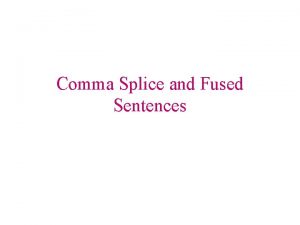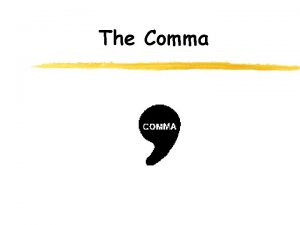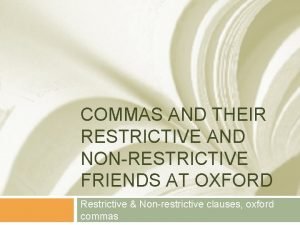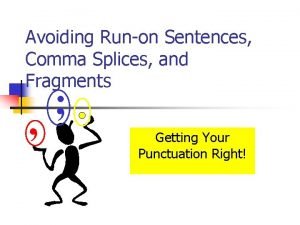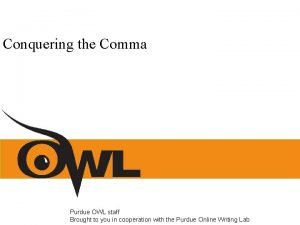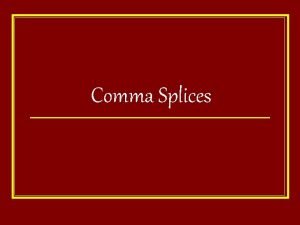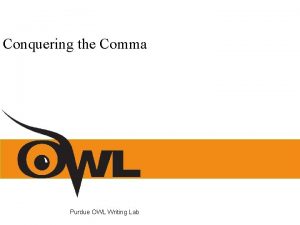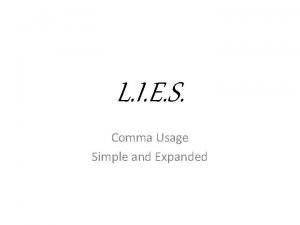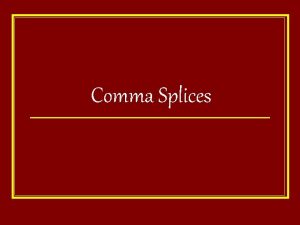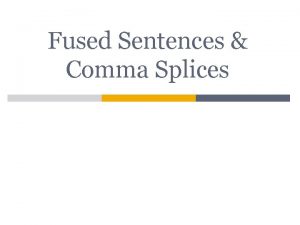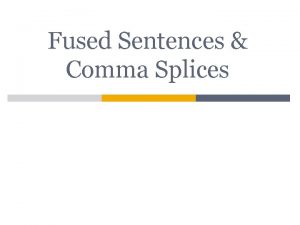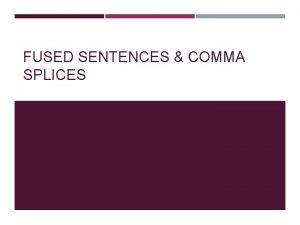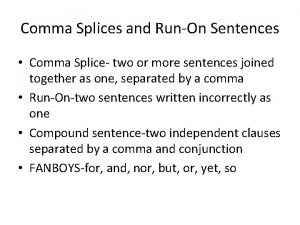Runon Sentences and Comma Splices Just say no









- Slides: 9

Run-on Sentences and Comma Splices Just say no.

Run-on Sentences �A run-on sentence is when two or more independent clauses are joined without the proper punctuation or conjunction. �Run-on sentences are common errors when a writer is rushing. �The following is a prime example of a run-on: �I like my new teacher Ms. Marple she is nice. �Where should the punctuation/conjunction go? �Yes, between “Marple” and “she”.

Run-on Sentences �Let’s take a further look at that run-on sentence from the previous slide. �There are several ways that sentence can be corrected: �I like my new teacher Ms. Marple. She is nice. �I like my new teacher Ms. Marple; she is nice. �I like my new teacher Ms. Marple, and she is nice. �I like my new teacher Ms. Marple because she is nice.

Run-on Sentences �Imperative sentences—sentences that give orders—can easily become run-ons if the writer is not careful. �Put on your shoes go outside. �What are some ways this sentence could be corrected? �Add punctuation: �Put your shoes on. Go outside. �Put your shoes on; go outside. �(Notice that a comma doesn’t cut it here… More on that later. ) �Add a conjunction: �Put your shoes on and go outside. �Put your shoes on, then go outside. �Put your shoes on before you go outside.

Run-on Sentences �Run-on sentences are often created when an independent clause gives an order based on a previous clause. �The upcoming quiz is a difficult one, you should study hard. �(Notice that pesky comma…) �The error in this sentence—two independent clauses separated by only a comma—is called a comma splice.

Comma Splices �A comma is not strong enough to separate independent clauses unless those clauses are in a list. �Incorrect: I wash my hands, I brush my teeth. �Correct: I wash my hands, then brush my teeth. �Incorrect: Go your room, you’re in trouble. �Correct: Go to your room! You’re in trouble. �Correct: John swept the floor, Anne washed the dishes and Tommy scrubbed the windows.

Comma Splices �While commas are not strong enough to separate independent clauses on their own, they can be used in conjunction with, well, a conjunction. �Correct: Daniel drove his car, and I drove mine. �In the above sentence, the comma is used properly to separate two independent clauses that contain two separate subjects (“Daniel” and “I”). �Incorrect: Daniel drove his car, I drove mine. �Yep, that comma is just not strong enough.

Run-ons and Comma Splices Decide which sentences are runons and which are correct. Answers � 1. Give me the key, I need to open the door. � 2. Joe’s mom is nice, she made us cookies. � 3. Lana likes pie, I like ice cream and Eric likes cake. � 4. Don’t keep me waiting; I am in suspense. � 5. Dean keeps his yard clean he’s very proud of it. � 1. Run-on � 2. Run-on � 3. Correct � 4. Correct � 5. Run-on

Hurray! You should now be able to avoid run-on sentences— including those pesky comma splices—in your own writing. You should also be able to recognize and correct them. For that, you get a cookie. When you feel ready, see Mrs. Shankle for your quiz.
